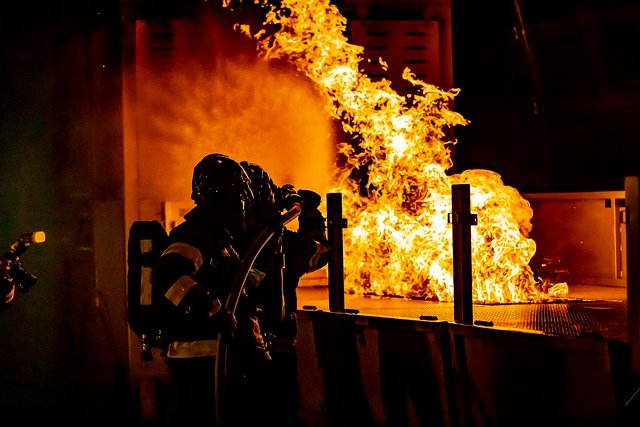Fire safety is one of those things that often gets pushed to the back of our minds until it’s too late. But the reality is, having an effective fire safety plan in place is not just a legal requirement; it’s a critical component of ensuring the safety of everyone in your building. And when it comes to crafting a comprehensive plan, enlisting the help of a fire safety adviser service can make all the difference. Let’s break down how to create a fire safety plan that’s not only effective but also tailored to your building’s unique needs.
Why You Need a Fire Safety Plan
First things first: Why is a fire safety plan so important?
A fire safety plan outlines the actions to be taken in the event of a fire, ensuring that everyone knows what to do to stay safe. It includes details on evacuation procedures, the location of fire alarms and extinguishers, and how to contact emergency services. Without a plan, chaos and confusion can quickly take over, increasing the risk of injury or worse.
The Role of a Professional Adviser
You might be thinking, “Do I really need a professional adviser?” The answer is a resounding yes. A professional adviser brings a wealth of knowledge and experience that’s essential in developing a thorough and effective fire safety plan. They understand the complexities of fire safety regulations and can ensure your plan is compliant with local laws. More importantly, they can tailor the plan to the specific needs of your building and its occupants.
Steps to Creating an Effective Fire Safety Plan
1. Assess the Risks
The first step in creating a fire safety plan is conducting a thorough risk assessment. This involves identifying potential fire hazards within the building. A professional adviser will examine everything from electrical systems to storage areas, pinpointing risks that you might not even be aware of.
Key areas to assess:
- Electrical wiring and appliances
- Heating systems
- Storage of flammable materials
- Kitchens and cooking areas
- Smoking areas
2. Install and Maintain Fire Safety Equipment
Having the right equipment in place is crucial. This includes fire alarms, smoke detectors, and fire extinguishers. Your adviser will recommend the best types of equipment for your building and ensure they are installed correctly.
Important equipment:
- Smoke detectors – Early detection is key.
- Fire alarms – Alert everyone in the building.
- Fire extinguishers – Essential for tackling small fires before they escalate.
- Sprinkler systems – Provide automatic suppression of fires.
3. Develop Evacuation Procedures
An effective evacuation plan is a cornerstone of any fire safety strategy. This involves mapping out the safest and quickest routes to exit the building. Your adviser will help you develop clear, easy-to-follow evacuation procedures tailored to your building’s layout.
Evacuation plan essentials:
- Clearly marked exit routes
- Designated assembly points
- Procedures for assisting individuals with disabilities
- Regular evacuation drills
4. Train Your Staff
Knowledge is power, especially when it comes to fire safety. Regular training ensures that everyone knows how to respond in the event of a fire. This includes knowing how to use fire extinguishers, understanding evacuation routes, and being aware of their role in the fire safety plan.
Training topics:
- Proper use of fire extinguishers
- Evacuation procedures
- Emergency contact protocols
- First aid basics
5. Regular Reviews and Updates
Fire safety is not a one-and-done deal. Your fire safety plan should be reviewed and updated regularly to account for any changes in the building or its use. A professional adviser will help you keep the plan current and effective.
Review checkpoints:
- Annual reviews
- After any significant changes to the building
- Following a fire drill or incident
Benefits of Working with a Professional Adviser
Expertise – Professional advisers have in-depth knowledge of fire safety regulations and best practices.
Customization – They tailor the fire safety plan to meet the specific needs of your building and occupants.
Compliance – Advisers ensure your plan complies with local laws and regulations.
Peace of mind – Knowing that a professional has helped craft your fire safety plan gives you confidence that you’re prepared.
Common Fire Safety Mistakes to Avoid
Even with a solid plan, there are common mistakes that can undermine your fire safety efforts. Here’s what to watch out for:
- Ignoring regular maintenance – Fire safety equipment needs regular checks and maintenance to function correctly.
- Overlooking training – Regular training is essential. Without it, even the best plan can fail.
- Not updating the plan – Your fire safety plan should evolve with changes in your building and its use.
- Neglecting fire drills – Regular drills ensure everyone knows what to do in an emergency.
The Human Factor in Fire Safety
Fire safety is as much about people as it is about equipment and procedures. Creating a culture of safety within your building is crucial. This means encouraging everyone to take fire safety seriously, from reporting potential hazards to participating actively in drills and training sessions.
Safety First, Always
Creating an effective fire safety plan is a critical responsibility for any building owner or manager. By working with a professional adviser, you can ensure that your plan is comprehensive, up-to-date, and tailored to your building’s unique needs. Remember, fire safety isn’t just about compliance; it’s about protecting lives. Invest the time and resources necessary to create a robust fire safety plan – because when it comes to safety, there’s no room for compromise.


